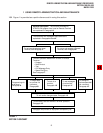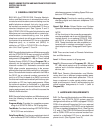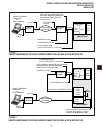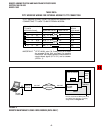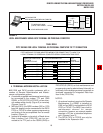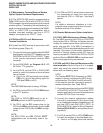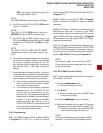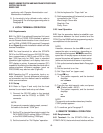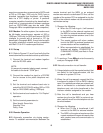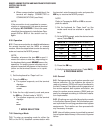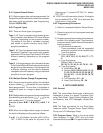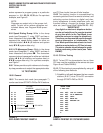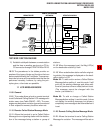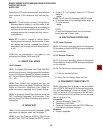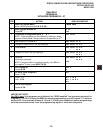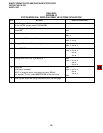
REMOTE ADMINISTRATION AND MAINTENANCE PROCEDURES
SECTION 100-816-600
MARCH 1993
-9-
remote terminal and the IMDU or an external
modem connected to a dedicated CO line, call the
number of the system CO line assigned to ring the
IMDU or the external modem via the remote termi-
nal/modem set-up:
1) Observe the following:
When the CO line rings-in, it will connect
to the IMDU or the external modem and
the IMDU or external modem will respond
by returning modem answer tone to the
remote modem.
The remote modem will return modem
tone to the IMDU or external modem and
communication will be established.
When communication is established, the
terminal will display: CONNECTED or
COMMUNICATIONS (see Note in Para-
graph 6.22).
2) To continue, Press CR and enter the security
code per Paragraph 6.30.
6.22 Manual connection via call transfer:
1) Using a telephone (at the remote location) that
can switch to the terminal/modem, dial the
number of a system CO line.
2) When the call is answered, request that it be
transferred to station 619 if an IMDU is being
used. For applications where an external mo-
dem is connected to a dedicated standard
telephone port, ask to be transferred to the
intercom number assigned to the modem.
3) After the call is transferred and you hear
modem tone from the IMDU or external mo-
dem, switch the call from the telephone to the
terminal/modem.
4) Observe the following:
When the CO line is transferred, it will
connect to the IMDU or external modem.
The IMDU or the external modem and the
remote modem will respond to each other
with modem tone and communication is
established.
asynchronous modem, communicate in ASCII code
at 300 or 1200 bps (1200 only for DK8), have a
standard typewriter-type keyboard, and display
data via a CRT display or printer. A personal
computer capable of emulating the described ter-
minal with a communications software package
(such as PROCOMM) may also be used. (See
Paragraph 15 for compatible personal computers).
6.02 Modem: For either system, the modem must
be full-duplex asynchronous, operate at 300 or
1200 bps (1200 only for DK8) and have an RS-232
interface to connect with a terminal or PC (as
described in Paragraph 6.01). It must interface with
the public telephone network and be compatible
with Bell 103 or 212 modem specifications.
6.10 Set-up
6.11 Refer to Figures 2, 3, and 4, and verify that the
remote terminal is connected and set-up as follows:
1) Connect the terminal and modem together
with the RS-232 cable.
NOTE:
If a personal computer is being used, connect
the cable to the serial “COM” port.
2) Connect the modem line input to a CO/PBX
line for access to the public telephone net-
work.
3) Set the terminal and modem baud rate to
match the DK16 PIOU(S) setting (300 or 1200
bps) or DK8 QSMU setting (1200 bps).
4) Set the terminal and modem for “Full Duplex”
operation.
5) Set the terminal parameters to:
Word length: Seven bits
Stop bits: One
Parity: Even
6.20 Remote Operation
6.21 Automatic connection via ringing assign-
ments: To establish communication between the



